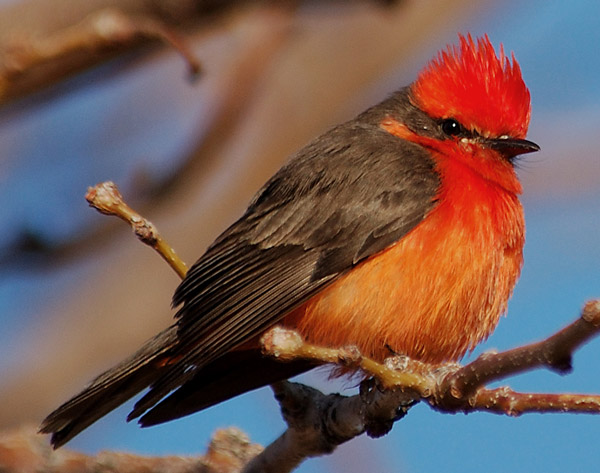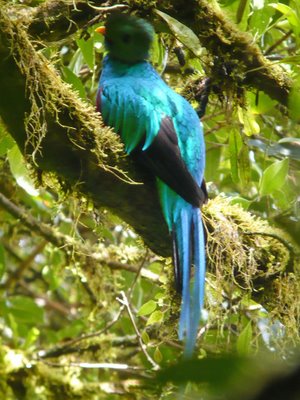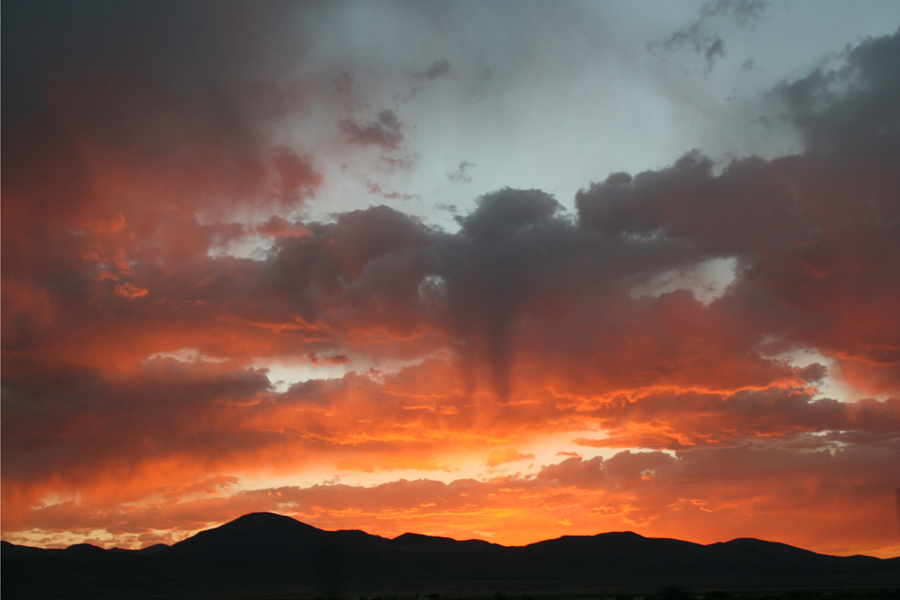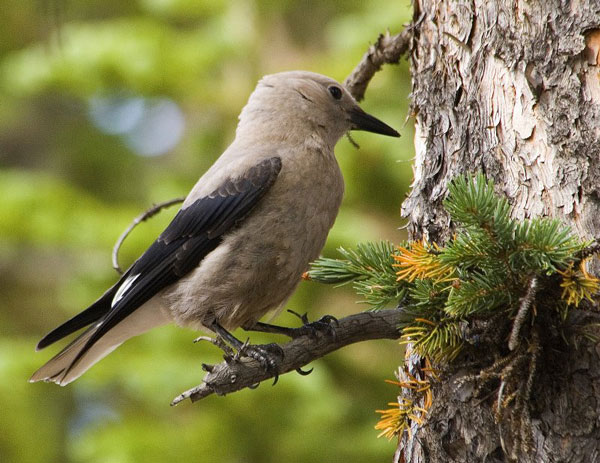Utah County Birders Newsletter
|
 |
|
Vermilion Flycatcher - photo by Lu Giddings |
Merrill's Musings
By Merrill Webb
My Ten Favorite Utah Birds
I know you have been asked what your favorite bird is. Is your answer based on recent memory? Appearance of the bird? Behavior of the bird? Nostalgia? The one you are looking at at the time? (Unless it's a starling, or house sparrow).
I can't narrow my list to just one. So here's my top ten in Utah. Maybe I will compile one for the other 49 states, but that will be a project that will be more difficult.
Here's my top ten:
1. Vermilion Flycatcher- I waited and looked a long time before finally seeing one in Utah--at Lytle's Ranch (before it was a preserve). When the sun is shining on it, there aren't many more beautiful birds.
2. White-crowned Sparrow- Probably the first bird I learned to identify. A small flock of 35-50 spent the winters around our dairy barn where they would feed on the seeds in the silage pit. I learned early on how to recognize their songs as they practiced for their spring migration.
3. American Dipper-- One of the most interesting birds I have ever watched. Their behavior in rivers is just amazing, and, they are beautiful songsters as well.
4. Gambel's Quail--Another bird I learned how to identify early in my youth. Only this time it was for hunting purposes. Was introduced to Beaver Dam Wash while hunting with my dad for this speedy, tasty gamebird.
5. Rough-legged Hawk-- Picked up an injured one with a broken wing. It spent about a week in our basement when we lived in Springville, while my wife scrounged chicken necks from Jolley poultry in Provo to keep it alive until I took it to Tracy Aviary for rehabilitation. Don't think it ever recovered the ability to fly. But it had a lot of intrigue for our two little daughters as they watched it from a safe distance on the basement steps.
6. Canyon Wren--Beautiful, cascading song reminds me of Snow's Canyon and Zion National Park, two of my favorite parks in southern Utah.
7. Cactus Wren--Not a beautiful bird, but well adapted to its habitat. And it's song is unmistakable. Another reminder of my upbringing in the hot desert of southern Utah.
8. Northern Mockingbird--This bird used to wake me in the mornings (usually very early) as it would sing in the elm tree outside my bedroom window. It is another reminder of my growing up years as I was slowly being introduced to the joys of birding.
9. Cedar Waxwing--One of the most beautiful birds I have ever seen. I had a dead one brought in to me at Provo High School after it had been killed by flying into a window. Had it preserved and used it to help students learn about identification. A good one to show how beautiful birds really are.
10. Phainopepla--Another very beautiful bird of southern Utah. Used to see it regularly at the St. George and Washington cemeteries during Memorial Day visits. In fact, I looked forward with anticipation to seeing this bird much more than seeing the grave stones.
There are other birds, some more beautiful, some at least as interesting, but
the birds I have mentioned above were all instrumental in my gaining an early
appreciation for an avocation I enjoy.
 |
|
Resplendent Quetzal |
Bird of the Month
Resplendent Quetzal
Pharomachrus mocinno
by Ned Hill
Don’t look for the Resplendent Quetzal to appear at your feeder any time soon.
This remarkable bird is restricted to the cloud forests from Southern Mexico to
Panama. It is related to the trogons (one species of which can be found in SE
Arizona). In ancient times it was considered divine—figuring in the religions of
the Mayans and Aztecs. The bird is nearly extirpated in Guatemala where it is
the national bird and the name of its currency. But it appears to be holding its
own in very ecologically conscious Costa Rica. That is where a group of Utah
County Birders found a pair a couple of years ago.
We had driven many miles over the rough dirt road leading to the Monteverde
Cloud Forest Preserve—a wonderful, protected area in the tops of the mountains
often shrouded in clouds. We hiked one of the trails that were known to contain
some of the large, decaying old trees required for Quetzal nesting. Our expert
guides, Dennis and Bryan Shirley, knew how to listen for the quavering bark-like
call of the bird. We finally found a beautiful male high up in a tree. It
appeared powder blue for a few seconds and then flashed brilliant, iridescent
green with a bright red chest. The male is about 14 inches long with an
additional 20-25 inch tail curling down behind it. Their feathers were highly
prized by local Indians as a sign of good planting. We also found the female
hollowing out a nesting cavity for the two eggs she would lay therein. We heard
that female Quetzals abandon the young shortly after hatching leaving chick
rearing duties to the male. How they navigate through the trees and in and out
of nesting cavities with those long tails is a feat worthy of the Olympics. They
feed on insects, wild avocados and other fruits, and frogs and lizards.
Of the approximately 9,700 birds of the world, not many have attained the
mystical, exalted status of the Resplendent Quetzal. If you have the opportunity
for international birding travel, this is one of the birds you’ll want to have
on your “must-see” list. [References consulted: Wikipedia (“Resplendent
Quetzal”, personal notes from Costa Rica UCB trip]
 |
|
Sunset at Goshen Bay - August 2, 2008 - photo by Keeli Marvel |
Utah County Owl Prowl - 2 August 2008
by Eric Huish
Several Utah County Birders met at the Payson Wal-Mart parking lot for an
evening of owling led by Lu Giddings. Unfortunately a wildfire had started in
the vicinity of Payson Canyon the day before and we were unable to go owling up
the canyon that night.
Our first stop was at a silo were we saw a couple Barn Owls. Then we headed for
the fields South of Elberta looking for Burrowing Owls - we couldn't find any.
Lu gave us the choice; a sure thing Great Horned Owl or a long shot Long-eared
Owl. We decided to take a shot at Long-eared and headed for the Tintic
Mountains. The Long-eared Owls were not there but the Tintics are a nice place
to be on a summer evening. There wasn't much bird activity. We were able
to get a Black-throated Gray Warbler, a singing Spotted Towhee, a Red-tailed
Hawk, Barn Swallows and few few other birds. The best were the Common Nighthawks
flying around in the orange sky near sunset. They were even doing their dive
displays.
We then rushed out to the Goshen Bay area where we got a great view of the
sunset, but not much else. We stopped at Warm Springs and played some owl calls
but only heard Bullfrogs and Crickets. Our last stop was up Santaquin Canyon, a
substitute for Payson Canyon. Here the field trip wound down as we played calls
and did some star gazing. Jupiter was out and we counted the moons through the
spotting scope.
We didn't get many owls (only two Barn) but if you've ever gone owling before
you know that on some nights the owls just aren't there. We had a great time.
Antelope Island - 23 August 2008
by Lu Giddings
Fourteen Utah County Birders left the Walmart parking lot where great-tailed
grackles were foraging for breakfast. We decided to drive straight across the
causeway and begin our birding day at Garr Ranch. Our first important sightings
of the day were of Cindy and Steve Sommerfeld and Jack Binch, who alerted us to
the presence of a northern waterthrush in the marshy area east of the ranch
house. A number of common but interesting birds were also seen at the ranch. As
we made the drive back to the Visitor's Center we enjoyed frequent views of the
bison that roam freely on the island. The Visitor's Center was most notable for
the large numbers of swallows frequenting the area. Most were tree swallows, but
we did see a few bank swallows and a violet-green swallow or two as well. There
were very few peeps along the causeway. The Summerfelds pointed out a few
sandpipers and Wilson's and red-necked phalarope in the harbor area.
Many thanks to Steve and Cindy and Jack for sharing their time and knowledge
with us, and thanks to all of you who participated!
trip participants, in alphabetical order (please, forgive me for misspellings!):
Ned Bixler, Bart Carter, Rachel Carter, Yvonne Carter, Bobbie Davis, Lynn
Garner, Lu Giddings, Alan Jensen, Joyce Jensen, LeIla Ogden, Lana Rodgers, Tuula
Rose, Merrill Webb, Bonnie Williams.
A partial trip list: 34 species
American White Pelican, Snowy Egret, White-faced Ibis, Killdeer, Black-necked
Stilt, American Avocet, Willet, Western Sandpiper, Wilson's Phalarope,
Red-necked Phalarope, Franklin's Gull, Ring-billed Gull, Californian Gull,
Mourning Dove, Great Horned Owl, Say's Phoebe, Western Kingbird, Eastern
Kingbird, Loggerhead Shrike, Warbling Vireo, Common Raven, Tree Swallow,
Violet-green Swallow, Bank Swallow, Cliff Swallow, Barn Swallow, Rock Wren,
American Robin, European Starling, Nashville Warbler, Northern Waterthrush,
Wilson's Warbler, Western Meadowlark, American Goldfinch.
 |
|
Clark's Nutcracker - photo by Lu Giddings
|
by Bonnie Williams
LiIla and I went on our second trip to Mirror Lake in search of a GRAY JAY. We
saw a BEAUTIFUL male PINE GROSBEAK in the camp ground and LeIla thought maybe a
fly by of the GRAY JAY. I wanted a good look so we set off for other
places that we had seen them. To make a long story short we ended up at
the Highland Trail Head across from Butterfly Lake. We went down a road
that led to a cabin, (we were not suppose to be there, but how did I know,
Dennis had taken us there once). The gentleman that was there was very
kind and even gave us a bowl of peanuts to feed the JAYS. We ended up back
in the Mirror Lake camp ground where LeIla put the peanuts on the picnic tables.
We soon had a CLARK'S NUTCRACKER coming in, then two, and three and finally at
least eight squawking all around us. The peanuts were soon gone and the
chorus ended but it was fun while it lasted. We never did get to see the
GRAY JAYS but all I can say is DARN I will just have to go again.
Fall Birding in Ohio
by Ned Bixler
Ohioans are no different than Utahans when it comes to birders. In the Fall we
anticipate their return and challenge our identification skills as they arrive
in their less brilliant feathers. Most of you know my former home was near Magee
Marsh Wildlife Area in northwest Ohio.
Looking over my Fall (September) birding notes , they show quite an abundance of
birds can be found frequently on the boardwalk:
Yellow-Billed Cuckoo, Black-Billed Cuckoo, Eastern Screech Owl, Great-Horned
Owl, Common Nighthawk, Chimney Swift, Northern Flicker, Yellow-Bellied
Sapsucker, Downy Woodpecker, Eastern Bluebird, Great Crested Flycatcher, Willow
Flycatcher, Least Flycatcher, Eastern Wood Pewee, Horned Lark, Tree Swallow,
Bank Swallow No. Rough Winged Swallow, Barn Swallow, Cliff Swallow, Purple
Martin, Blue Jay, Brown Creeper, House Wren, Marsh Wren, Gray Catbird, Brown
Thrasher, Robin, Hermit Thrush, Swainson's Thrush, Gray Cheeked Thrush, Blue
Gray Gnatcatcher, Golden Crowned Kinglet, Ruby Crowned Kinglet, Cedar Waxwing,
Starling, Red -Eyed Vireo, Warbling Vireo, Black and White Warbler, Golden
Winged Warbler, Blue Winged Warbler, Tennessee Warbler, Nashville Warbler,
Yellow Warbler, Magnolia Warbler, Cape May Warbler, Black Throated Warbler,
Yellow Rump Warbler, Black Throated Green Warbler, Blackburnian Warbler,
Chestnut Sided Warbler, Bay Breasted Warbler, Blackpoll Warbler, Palm Warbler,
Ovenbird, Northern Waterthrush, Common Yellowthroat, Wilson's Warbler, Canada
Warbler, American Redstart, Eastern Meadowlark, Red Winged Blackbird, Rusty
Blackbird, Common Grackle, Brown Headed Cowbird, Scarlet Tanager, Northern
Cardinal, Rose Breasted Grosbeak, Indigo Bunting, Eastern Towhee, Savannah
Sparrow, American Tree Sparrow, White Crowned Sparrow, White Throated Sparrow,
Fox Sparrow, Swamp Sparrow, Song Sparrow, House Finch, American Goldfinch, and
House Sparrow.
Occasionally I saw other warblers such as: Prothonotary Warbler, Orange
Crowned Warbler, Northern Parula, Cerulean Warbler, Pine Warbler, Connecticut
Warbler, Mourning Warbler, and Yellow Breasted Chat.
You can see that Ohio bird watchers are as anxious for Fall migration as the
Utah bird watchers. Bring on those hard-to-identify Fall birds.
Backyard Bird of the
Month
August 2008
Steve Carr - Holladay
California Quail - Lots of chicks of various ages, along with adults.
Lynn Garner - Provo
Tyrannical Rufous Hummingbirds, particularly females, turning the back
yard into a WW1 aerial dogfight!
Eric Huish - Pleasant Grove
Calliope Hummingbird - that's a small bird.
Milt Moody - Provo
Zooming Hummingbirds - 3 or maybe 4 (female Calliope) species , I'm
thinking.
Gayla Muir - Orem
I had a Black-headed Grosbeak visit my yard trying very hard to hang on
to my sunflower seed feeder with not much success. Also, the Scrub Jays
are back gathering black walnuts from my neighbor's tree. Like everyone else,
the Rufous Hummingbirds have hit my backyard and set up their war camp.
Cheryl Peterson - Provo
Rufous Hummingbird
Merrill Webb - Orem
MacGillivray's Warbler - Yard bird #60.
Bonnie Williams - Mapleton
Hummingbirds - Help! The more I look at the females and the young the
more confused I get.
We would like you to share your favorite backyard bird each month. Please send
your favorite bird at the end of the month to newsletter@utahbirds.org or call
360-8777.